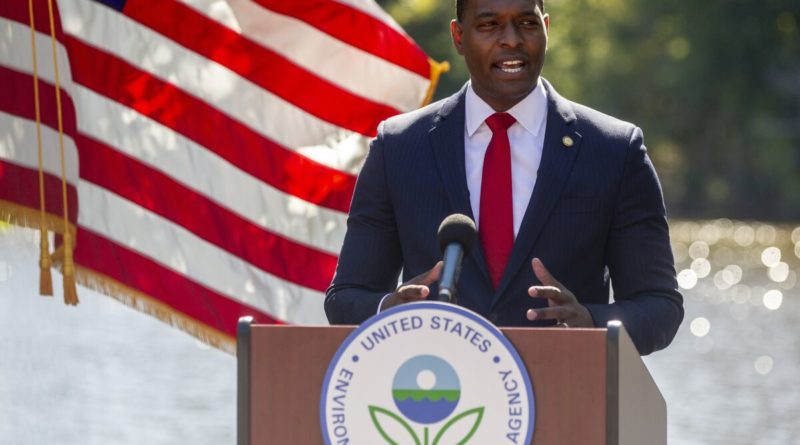Environmental: Proposed Changes to Protect American Families Drinking Water.
Environmental: Proposed Changes to Protect American Families' Drinking Water.
The EPA is warning that two nonstick and stain-resistant compounds found in drinking water are more dangerous than previously thought, posing health risks even at levels so low that they cannot currently be detected, coined “Forever Chemicals”
Although PFOA and PFOS have been voluntarily phased out by American manufacturers, there are still certain uses for the chemicals, and because they do not degrade over time, they are still present in the environment. The substances are a subset of PFAS, a wider group of “forever chemicals” that have been present in industrial and consumer items since the 1940s.
This Monday, the EPA released a “quasi” health recommendations, replacing 2016 standards that had placed the health risk levels for PFOA and PFOS at 70 parts per trillion. Products including cardboard packing, carpets, and firefighting foam contain the chemicals.
What are PFOA, PFOS, and PFAS?
Both PFOA and PFOS… the man-made substances that were once employed in the production of many different consumer goods. While they temporarily ease life, they have severe negative long-term implications on both human and environmental health.
Perfluorooctanoic acid and perfluorooctane sulfonate–more commonly referred to as PFOA and PFOS, respectively–are fluorinated organic compounds that are part of larger group of compounds known as perfluoroalkyl substances (PFAS).
These synthetic compounds are notorious for not being affected by lipids or water. PFOA and PFOS were widely employed to coat goods that were intended to be stain-resistant, waterproof, or non-stick (like DuPont’s Teflon) once production ramped up in the 1950s. While being practical, these highly fluorinated chemicals are linked to some major health issues. The fact that they linger in the environment for a very, very long time only serves to exacerbate their harmful impact on human health.
The will “Never Break Down” in the environment at all.
PFOA and PFOS in our Drinking Water
In 2016, PFOA contamination was discovered in 1% of samples taken from public drinking water systems around the country. Despite this, PFOA and PFOS levels in drinking water are not officially regulated by the EPA. The EPA did issue temporary health advisories for the substances in 2009.
For PFOS and PFOA in public water systems, the EPA upgraded the 2009 standards with lifelong health advisories in 2016.

Nico De Pasquale Photography / Getty Images
It informed towns that it was unsafe for drinking water sources to include levels of PFOA and PFOS (combined) above 70 ppt.
According to epidemiological data in human populations and ongoing research on laboratory animals, the EPA has hypothesized that exposure to PFOA and PFOS above a threshold may have the following effects on human health:
- Effects on development
- Cancer
- Liver injury
- autoimmune diseases
- Thyroid dysfunction
- Heart-related issues
How has Europe made similar changes?
There European started making similar changes back in 2020 as follows:
- 2020 saw the revision of the EU’s Drinking Water Directive to limit total PFAS to 500 ng/l.
- The EU will prohibit the use of all PFAS in firefighting foams and other applications, only allowing their use in situations where they are actually necessary for society.
- In order to work on PFAS remediation, the EU has asked for proposals under the Green Deal and is providing subsidies to encourage research.
According to research conducted in the UK between 2014 and 2019 on lakes, rivers, groundwaters, estuaries, and coastal waters, PFAS are widely distributed in English surface and groundwaters. - According to the UK Drinking Water Inspectorate’s findings, there have been no notifications of PFAS levels in drinking water that are higher than recommended.
PFAS are often examined using liquid chromatography and mass spectrometry. - Fluoride-containing compound screening can be done using combustion ion chromatography.
- See more.
What is next?
With federal financial support, water companies that provide services to urban regions should be able to spread out costs with the aid of the federal government in a manner similar to that of an advocacy group that works to remove dangerous substances from food, water, clothing, and other products. There are currently PFAS drinking water limitations in place in a number of states.
The House passed legislation that would mandate the EPA to establish discharge limits for a number of companies suspected of discharging PFAS into the water and create a national threshold for PFAS in drinking water. In the Senate, the bill is deadlocked.
Von Keller Blog is an informational website with public news, company insights and reports of our companies events, news, press and blogging. Let’s Chat.

Photo:Damir Mijailovic Pexel
- Global Pet Adoption by North Shore Animal League - May 1, 2023
- JP Morgan is the Superhero of the Banking Crisis - May 1, 2023
- Data from satellites Deforestation in Brazil’s Amazon has decreased since last year. - March 16, 2023

